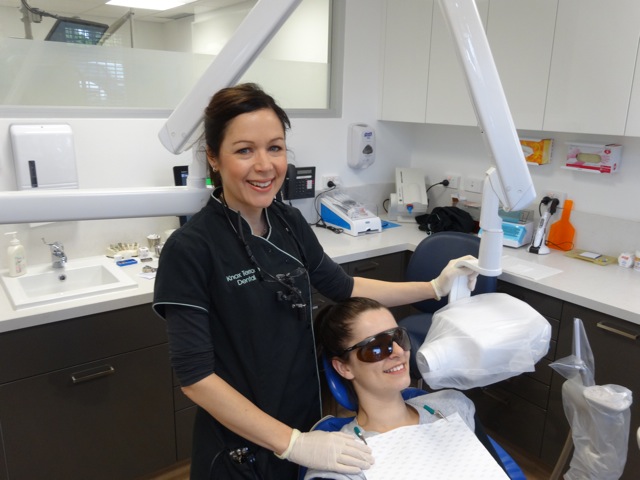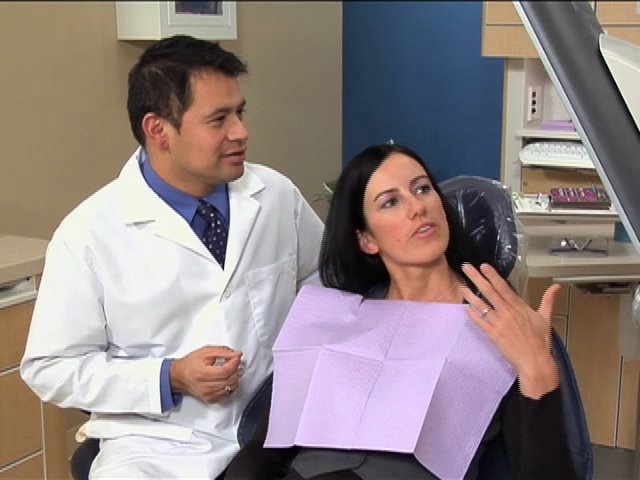Gum disease, also known as periodontal disease, is a common condition that affects the tissues surrounding the teeth. It is caused by bacteria found in plaque, a sticky film that forms on the teeth and gums. Without proper oral hygiene, plaque can harden into tartar and lead to inflammation of the gums, known as gingivitis, which can progress to more severe forms of gum disease if left untreated. In this blog post, we’ll explore the symptoms, stages, and treatment options for gum disease to help you better understand this prevalent oral health condition.
Symptoms of Gum Disease
The early stages of gum disease may present with mild symptoms or no symptoms at all, making it important to be vigilant about oral health and attend regular dental checkups. However, as the condition progresses, the following symptoms may occur:
- Red, swollen, or tender gums
- Bleeding gums, especially when brushing or flossing
- Persistent bad breath or a bad taste in the mouth
- Receding gums, causing teeth to appear longer than usual
- Loose or shifting teeth
- Pus between the teeth and gums
- Changes in the fit of dentures or bridges

Stages of Gum Disease
Gum disease progresses through several stages, each with its characteristics and implications for oral health:
- Gingivitis: The earliest stage of gum disease, gingivitis is characterized by inflammation of the gums due to plaque buildup. With proper oral hygiene and professional dental care, gingivitis is reversible.
- Early Periodontitis: If left untreated, gingivitis can progress to early periodontitis, where the infection spreads below the gumline, causing the gums to pull away from the teeth and form pockets. These pockets can trap bacteria and debris, leading to further inflammation and damage to the supporting structures of the teeth.
- Moderate Periodontitis: In this stage, the infection continues to progress, causing deeper pockets and more severe damage to the gums, bone, and connective tissues that support the teeth. Teeth may become loose or shift in position.
- Advanced Periodontitis: The most severe form of gum disease, advanced periodontitis is characterized by extensive damage to the gums, bone, and supporting structures of the teeth. Teeth may become severely loose or fall out, and significant bone loss may occur.
Treatment Options for Gum Disease
The treatment for gum disease depends on the severity of the condition and may include the following:
- Professional Dental Cleaning: In the early stages of gum disease, professional dental cleaning, also known as scaling and root planing, can remove plaque and tartar buildup from the teeth and gums, reducing inflammation and promoting healing.
- Antibiotic Therapy: Antibiotics may be prescribed to control bacterial infection and reduce inflammation in the gums. They may be taken orally or applied directly to the affected areas.
- Surgical Procedures: In advanced cases of gum disease, surgical intervention may be necessary to remove infected tissue, reshape the gums, or repair damaged bone. Procedures such as flap surgery, bone grafting, and tissue regeneration may be performed to restore oral health.
- Ongoing Maintenance: Following treatment for gum disease, regular dental visits, and proper oral hygiene practices are essential to prevent the recurrence of the condition. This includes brushing twice daily with fluoride toothpaste, flossing daily, and using an antiseptic mouthwash as recommended by your dentist.
Conclusion
Gum disease is a common and preventable oral health condition that can have serious implications for overall health if left untreated according to this post from IntoThePixel. By understanding the symptoms, stages, and treatment options for gum disease, individuals can take proactive steps to protect their oral health and prevent complications. Remember to maintain good oral hygiene, attend regular dental checkups, and seek prompt treatment for any signs of gum disease to ensure a healthy smile for years to come.





